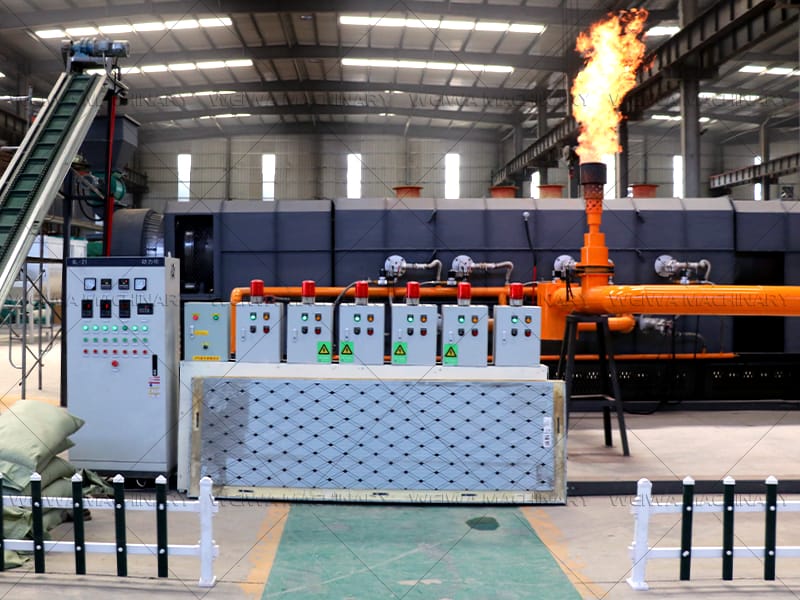Introduction to 连续碳化炉 技术
The 连续碳化炉 has revolutionized biomass waste recycling, particularly for materials like palm shell, 椰子壳, 和木屑. Unlike traditional batch-type furnaces, a连续碳化炉 allows for uninterrupted processing, 提高效率, 减少能耗, and ensuring consistent product quality.
How Does a Continuous Carbonization Furnace Work?
a连续碳化炉 operates by feeding biomass material (such as palm shell) into the furnace at a controlled rate while maintaining high temperatures (typically 400–600°C). The process involves:
1. Drying Stage
The raw material enters the preheating zone, where moisture is removed to prepare it for carbonization.
2. Carbonization Stage
一旦干燥, 材料进入高温区域, 发生热解的地方, breaking down organic compounds into charcoal, bio-oil, and syngas.
3. Discharge and Cooling
The carbonized product is continuously discharged while being cooled to prevent re-oxidation.
这个continuous process eliminates the need for repeated loading and unloading, making it highly efficient for industrial-scale operations.
Why Palm Shell is an Ideal Feedstock for Carbonization
Palm shell, a byproduct of palm oil production, is widely available in Malaysia and Southeast Asia. Its high carbon content (~45-50%) and low ash make it an excellent material for producing high-quality charcoal.
Advantages of Using Palm Shell:
- Abundant supply in Malaysia
- 高热量价值 after carbonization
- 低水分含量 (reduces pre-treatment needs)
- Eco-friendly waste recycling
Our Malaysian client chose palm shell as their primary feedstock due to its availability and profitability in the charcoal market.
Case Study: Malaysian Client’s Successful Trial at Weiwa Machinery
最近, a client from Malaysia visited our factory to test our 连续碳化炉与palm shell. Here’s how the trial went:
1. Pre-Trial Preparation
Before the test, we discussed the client’s requirements, 包括:
- Desired carbonization temperature
- Expected output capacity
- Fuel source (gas or biomass)
2. The Trial Process
The client brought palm shell samples, and we loaded them into the furnace. Key observations included:
- 温度控制稳定 (maintained at 500°C)
- Smooth feeding and discharge (no blockages)
- High-quality charcoal output (low ash, high fixed carbon)
3. Post-Trial Feedback
The client was impressed with:
- 效率 (continuous operation vs. batch processing)
- Low energy consumption
- Ease of operation
This successful trial reinforced our furnace’s reliability for palm shell carbonization in Malaysia.
Factors Influencing Continuous Carbonization Furnace Price
When considering a 连续碳化炉, price is a key factor. 然而, it’s essential to evaluate:
1. 容量 & 尺寸
Larger furnaces (higher output) cost more but offer better economies of scale.
2. Automation Level
Fully automated systems with PLC controls command a premium but reduce labor costs.
3. Fuel Type
Gas-fired furnaces are cleaner but may cost more upfront than biomass-fired ones.
4. After-Sales Support
Our furnaces include installation guidance and maintenance support, adding long-term value.
For our Malaysian client, we provided a 具有成本效益的解决方案 tailored to their production needs.
关于 WEIWA机械
在WEIWA机械, we specialize in biomass carbonization solutions, 包括连续碳化炉对于palm shell, 椰子壳, 和木材废料. With years of experience in Southeast Asia, we provide:
- Customized furnace designs
- On-site installation support
- Efficient after-sales service
Our mission is to help clients turn waste into valuable resources while promoting sustainable practices.





 微信
微信

 +8613838093177
+8613838093177